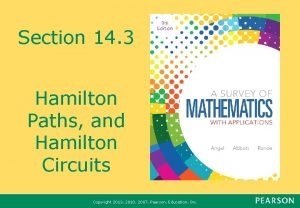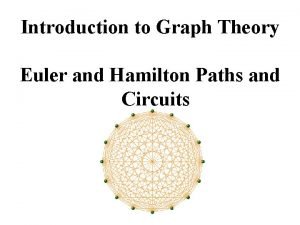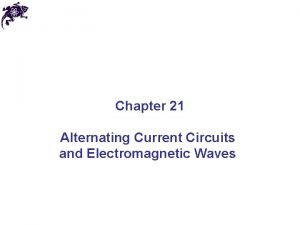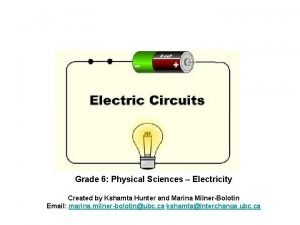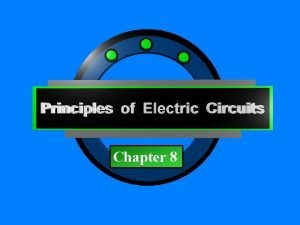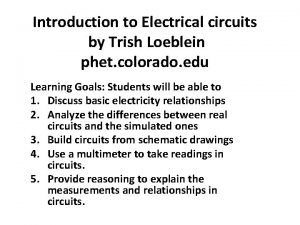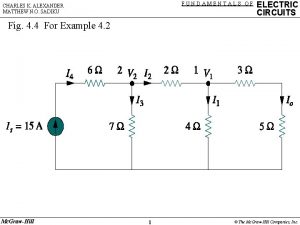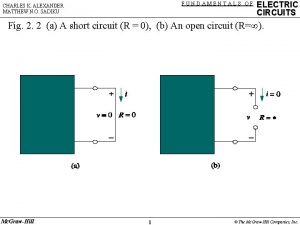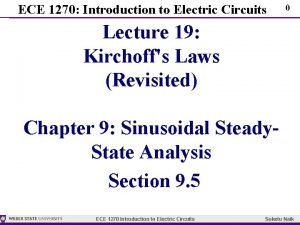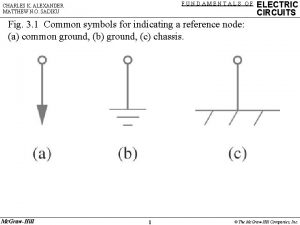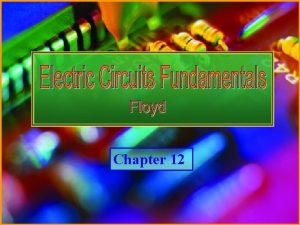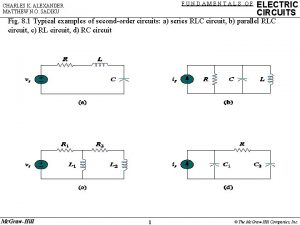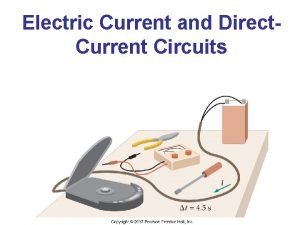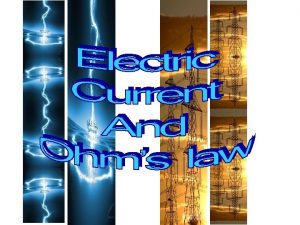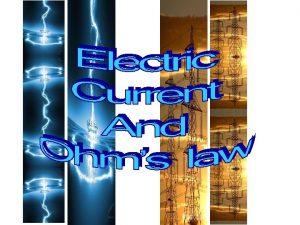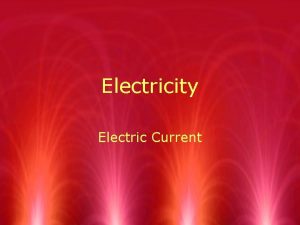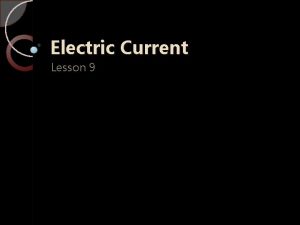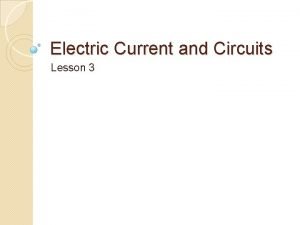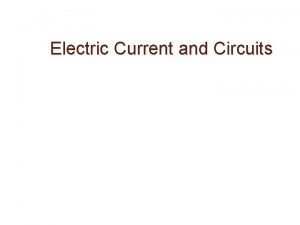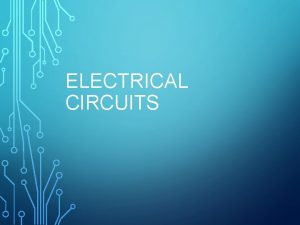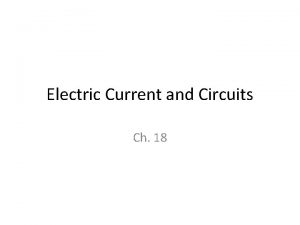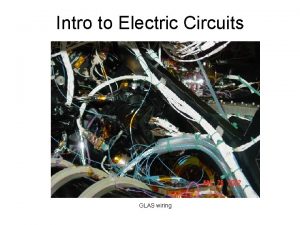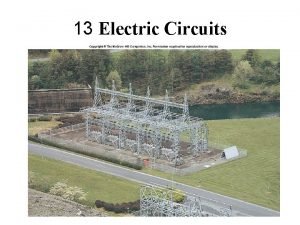Electric Circuits Paths for Electric Current Electric Current



















- Slides: 19

Electric Circuits Paths for Electric Current

Electric Current Electric current is the flow of particles that have a net electric charge.

Light Bulb The very thin wire that glows is called the filament. It is made of tungsten, a metal that will not melt until it reaches a very high temperature. A glowing tungsten wire would burn up in air. So, inside the bulb there is a vacuum or an inert gas like argon. To better understand a light bulb, let’s look inside.

Light Bulb Diagram Electric charges moving through the filament make it glow.

Experiment 1: Lighting a light bulb Obtain one battery, one light bulb, and one copper wire. Try to light the light bulb by connecting these in as many ways as you can.

Experiment 1: Lighting a light bulb Sketch each arrangement that you try. Arrangements that DON’T LIGHT THE BULB Arrangements that LIGHT THE BULB


Closed Electric Circuits Any arrangement of a bulb, a battery and a wire that allows the bulb to light is called a closed electric circuit. The terms complete circuit, or just circuit are also used. The word “circuit” was originally used to mean “a circular route or course. ” Why is circuit a suitable name for an arrangement of a bulb, battery, and wire in which the bulb is lit?

Experiment 2: Lighting a light bulb with different materials Use one of the arrangements you found that lights the bulb to test if other materials besides copper wire will light the bulb. Aluminum wire Plastic String


Conductors and Insulators Some materials contain particles with electric charge that are free to move through the material. We call this type of material a conductor. Examples of conductors: metal water with dissolved salts plasma A material that contains particles with electric charge that are not free to move is called an insulator. Examples of insulators: rubber plastic wood (dry)

Closed Electric Circuits The materials that makes up each piece in a closed electric circuit need to be a conductor. X Copper wire Aluminum wire Plastic

Light Bulb Diagram Electric charges moving through the filament make it glow. Which parts of the bulb do you think are metal conductors?

Light Bulb Diagram Which parts of the bulb do you think are metal conductors? Conductor

Light Bulb Diagram Which parts of the bulb do you think are metal conductors? Which parts of the bulb do you think are insulators? Insulator

Electric Current A conductor contains mobile electric charges that can move through the material.

Electric Current A conductor contains mobile electric charges that can move through the material. When there is a complete circuit, electrical forces are rapidly created throughout the circuit. These forces cause mobile charges within conductors (electrons within metal) to move, creating an electric current.

In which of the circuits below will the bulb light? (A) (B) (C) (Select all that apply) (D)

In which of the circuits below will the bulb light? (A) (B) (C) (Answers) (D)
 Hamilton
Hamilton Euler
Euler A hamilton circuit
A hamilton circuit Advantages of parallel circuits over series circuit
Advantages of parallel circuits over series circuit Ohm's law and electric power worksheet answers
Ohm's law and electric power worksheet answers Alternating current circuits and electromagnetic waves
Alternating current circuits and electromagnetic waves Kshamta hunter
Kshamta hunter Fundamentals of electric circuits chapter 7 solutions
Fundamentals of electric circuits chapter 7 solutions Principles of electric circuits 10th edition answer key
Principles of electric circuits 10th edition answer key Phet ac circuit
Phet ac circuit Sadiku
Sadiku Alexander and sadiku
Alexander and sadiku Chapter 20 electric circuits
Chapter 20 electric circuits Introduction to electric circuits
Introduction to electric circuits Alexander
Alexander Electric circuits by james nilsson and susan riedel
Electric circuits by james nilsson and susan riedel Chapter 35 electric circuits answers
Chapter 35 electric circuits answers Electric circuits fundamentals floyd
Electric circuits fundamentals floyd Fundamentals of electric circuits chapter 4 solutions
Fundamentals of electric circuits chapter 4 solutions Fundamentals of electric circuits
Fundamentals of electric circuits
